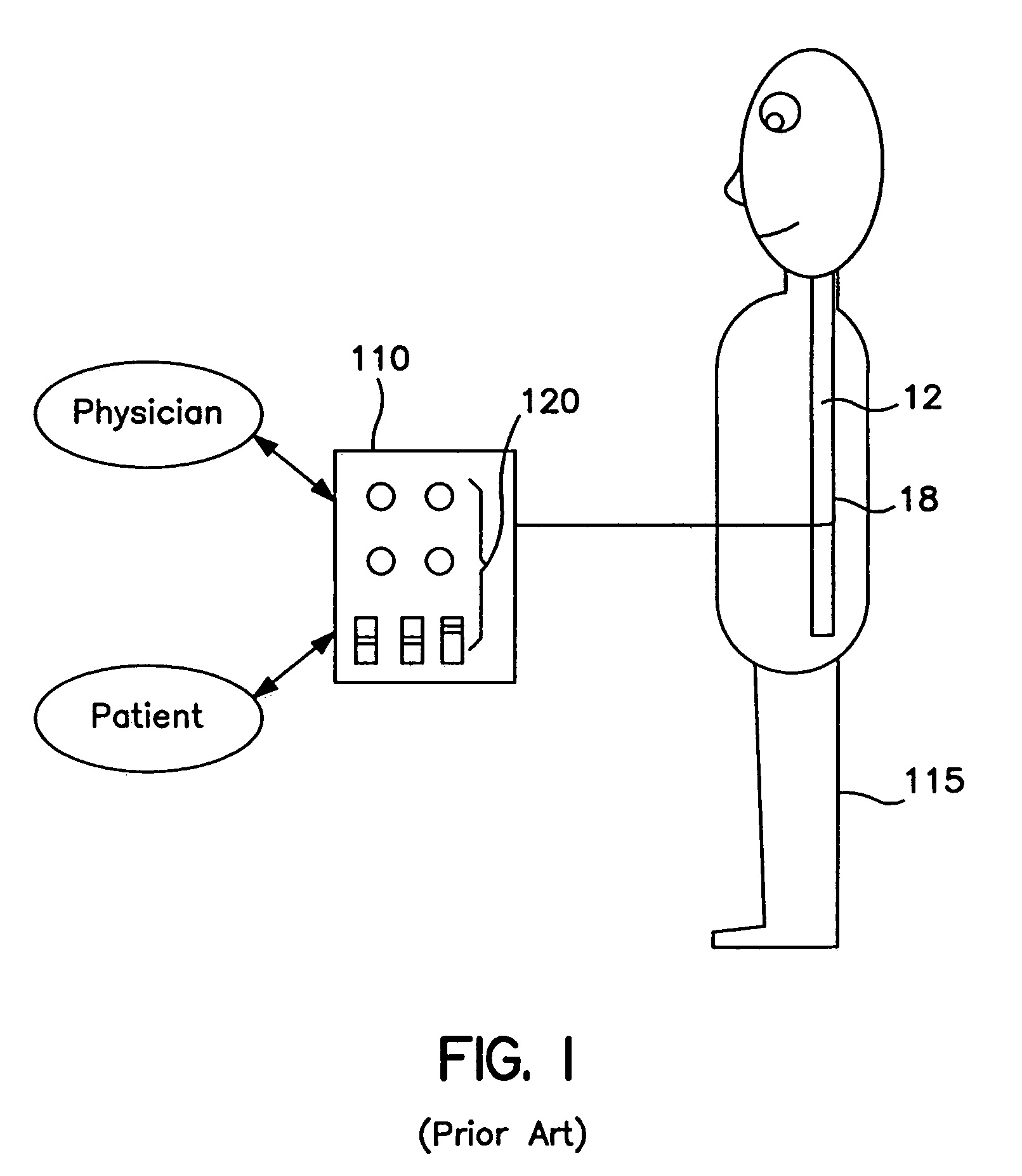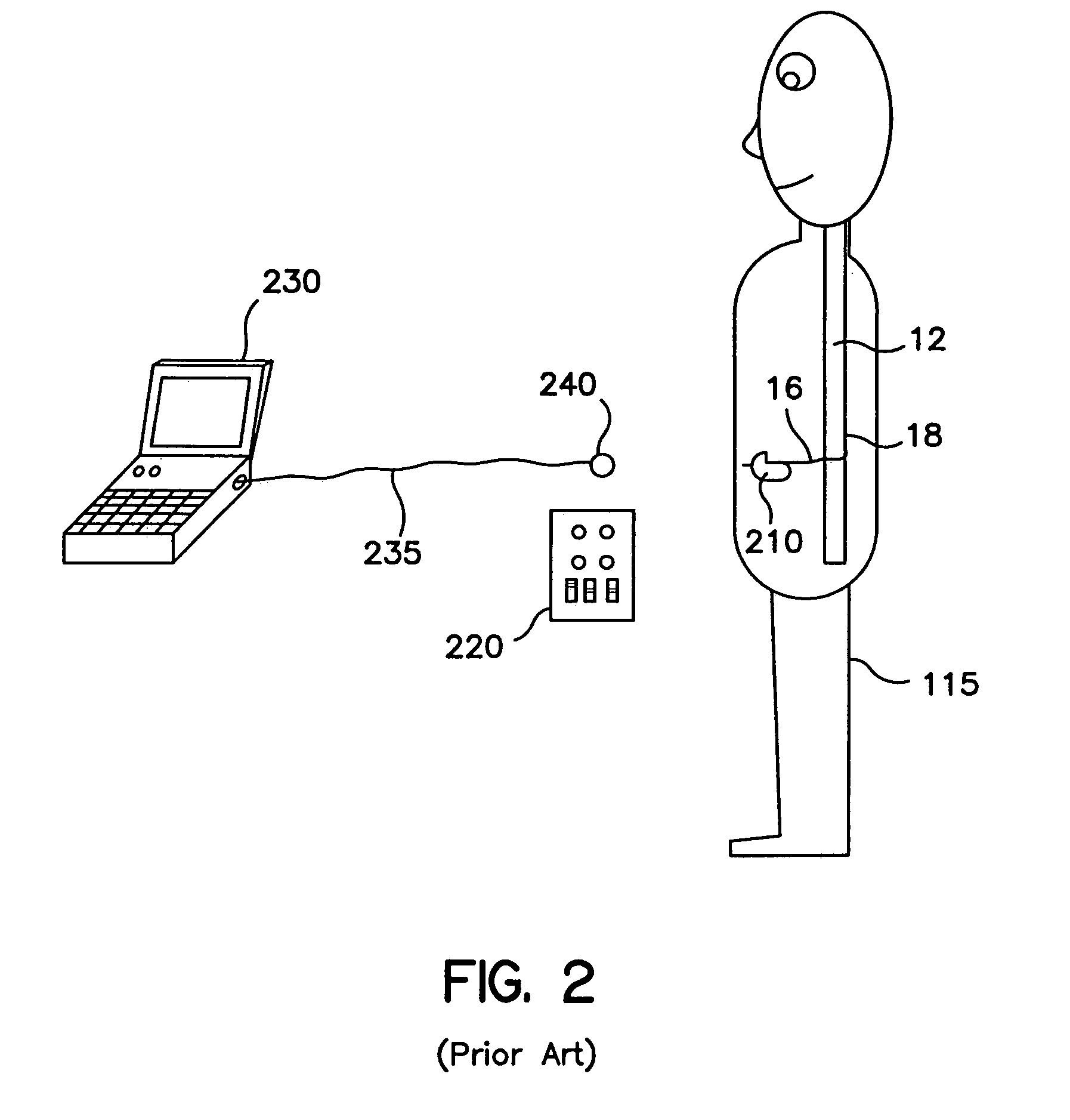Method and apparatus for programming an implantable medical device
a medical device and implantable technology, applied in electrotherapy, therapy, etc., can solve the problems of human error in re-entering the setting, requiring additional learning time, and wasting valuable physician time, and achieve the effect of convenient handling, optimal efficacy of treatment therapy, and convenient handling
- Summary
- Abstract
- Description
- Claims
- Application Information
AI Technical Summary
Benefits of technology
Problems solved by technology
Method used
Image
Examples
Embodiment Construction
[0023]The system of the present invention may be implemented for a two-phase implant process.
[0024]FIGS. 3A–3C illustrate the configuration of the components of the present invention during the various phases of implanting the medical device. Although the preferred embodiment of the present invention is shown for use with an implantable electrical stimulation system, those skilled in the art will appreciate that the programming system of the present invention may also be used to program an implantable drug delivery system (FIG. 4, discussed herein), or even a combination electrical stimulation / drug delivery system.
[0025]Referring to FIG. 3A, the programming system of the present invention generally includes a hand-held physician programmer 310, a remote telemetry unit 340, a hand-held patient programmer 320, an external neural stimulator (ENS) 330, an implantable neural stimulator (INS) 210, and one or more leads 16. These units permit testing of an implanted medical device and allo...
PUM
 Login to View More
Login to View More Abstract
Description
Claims
Application Information
 Login to View More
Login to View More - R&D
- Intellectual Property
- Life Sciences
- Materials
- Tech Scout
- Unparalleled Data Quality
- Higher Quality Content
- 60% Fewer Hallucinations
Browse by: Latest US Patents, China's latest patents, Technical Efficacy Thesaurus, Application Domain, Technology Topic, Popular Technical Reports.
© 2025 PatSnap. All rights reserved.Legal|Privacy policy|Modern Slavery Act Transparency Statement|Sitemap|About US| Contact US: help@patsnap.com



